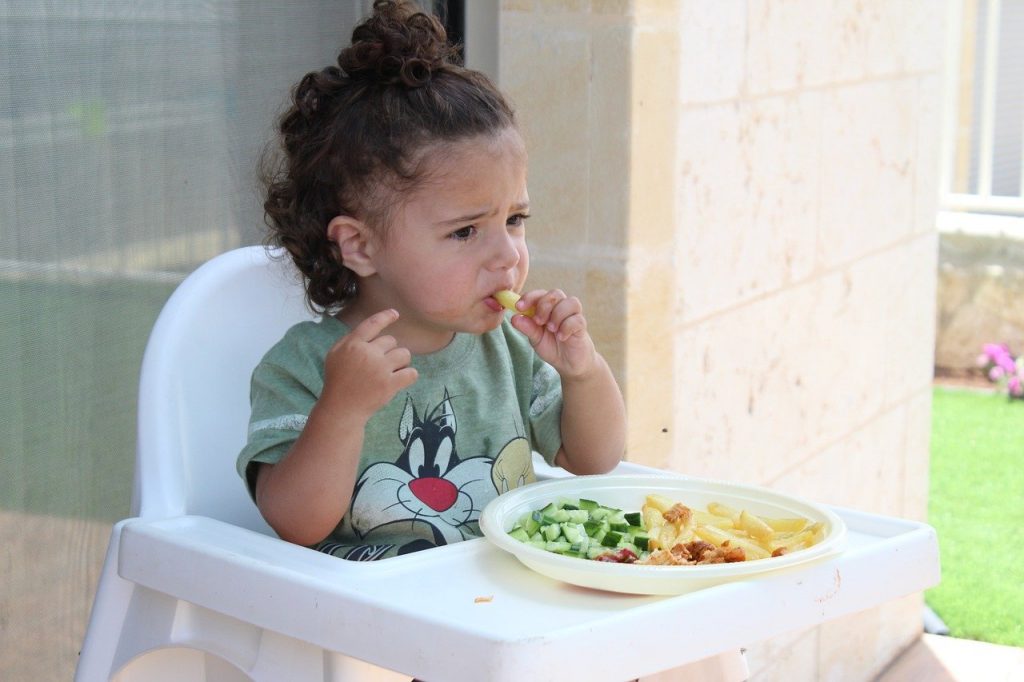[Article updated on 19/09/2023]
We are hearing more and more about Child-Led Food Diversification, known as DME. What about it? How to approach it with your baby?
Remember that from 6 months, the baby must be quite toned To hold his back straight and can sit up alone,
In addition, the child must be able tobring himself food to his mouth without help from his parents.
The DME is a key stage in the development and learning of the child’s tastes. Here are the key points:
- The baby must find interest in food and starts chewing on his toys to keep him awake. curiosity and motor skills,
- The pieces offered to baby must be large enough to be held in their hand,
- Do not mix your food but have the child choose and always according to the quantities necessary for its needs,
- Parents must spend on baby’s meal the weather necessary (at least 30 mins),
- Introduce only one change per day to his diet: start for example by introducing vegetables for lunch and only later try fruit as a snack,
- Note that breast or infant milk must always be maintained. It remains the basis of its diet,
DME is above all a discovery of foods, a learning of tastes, textures and a first step towards taste autonomy. The portions dedicated to the baby can be minimal at first and gradually increased. They must, however, remain only a complement to the milk maternal or infant (500ml per day from 6 months to 3 years).

What foods to start with?
Parents can start with “chew foods.” These foods can be offered from the start of DME, they are part of the discovery of foods even if the baby does not actually eat them. He will put them in his mouth, chew them, taste them, without being able to detach a piece. The whole raw and peeled carrot is ideal, it should not be too thin so that the baby does not stick it in the back of the mouth.
Then there will be the “gnaw foods”. As soon as the baby’s first teeth arrive, he can taste, for example, a whole peeled apple, a cucumber or a piece of bread. Just don’t give too much bread because it is high in sodium.
Finally, the “chew foods” appear. A food is suitable for chewing when it crushes easily in the baby’s mouth or the baby crushes it between his tongue and palate. Parents can introduce banana, a floret of cooked broccoli/cauliflower, a piece of watermelon (grain-free), boiled pasta without salt, a slice of avocado or a stick of boiled carrot or steam.
Some important rules must be respected in DME
Avoid excessive foods hard that the child will not be able to cut into small pieces easily (certain raw vegetables, etc.),
Prohibit foods that could stickat the Palace and which will therefore be difficult to chew and especially to swallow (sandwich bread, etc.),
Exclude products round that could get stuck in the throat (grapes, peanuts, cherry tomatoes, etc.), Foods that could only be released by too big pieces (apple quarters for example) and fish fillets with edges.
